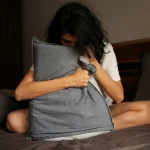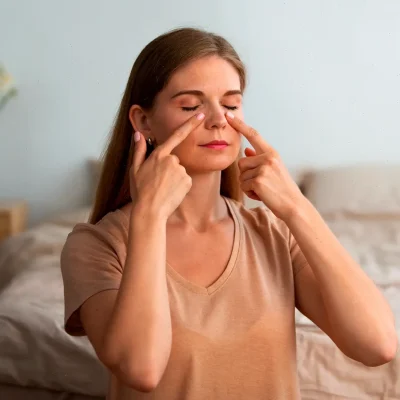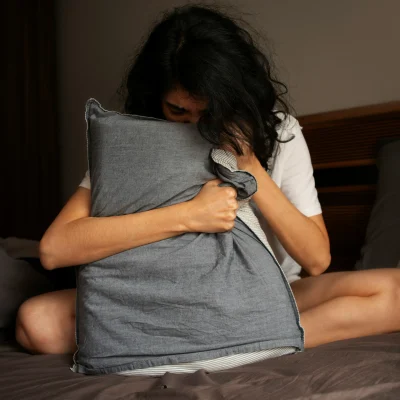When I first heard the word “endometriosis,” it felt distant and confusing. But as I started talking with friends, readers, and clients, I realized just how common this condition really is—far more than we openly acknowledge.
The pain we often brush off as “just bad cramps,” the deep fatigue, fertility struggles, painful intimacy—these could all be signs of endometriosis. And it’s so important for every woman to know: there are ways to support your body—gently, naturally, and with deep respect for your feminine nature.
So, what is endometriosis—simply put?
It’s when endometrial tissue—the kind that’s supposed to line the inside of your uterus—starts growing in other places, most often within the pelvic cavity. This tissue responds to hormones, especially estrogen, and also activates the immune system. The result? Chronic inflammation, lower abdominal pain, discomfort during menstruation and intimacy, and sometimes even infertility.
The key to understanding endometriosis lies in its hormonal nature. This tissue is glandular—meaning, it literally feeds on estrogen. That’s why estrogen dominance is one of the biggest risk factors.
What Causes Endometriosis—And What to Change First
1. Tampons: A Hidden Threat?
Even if you’re using “natural” or cotton tampons, it’s important to know that most conventional cotton is genetically modified—often Bt cotton, which contains an insecticide built into its fibers. Imagine how that might affect your most delicate tissues, cycle after cycle.
Tip: Switch to certified organic tampons or try reusable options like menstrual cups or period underwear.
2. Dairy Products
Milk is designed to help calves grow—and that’s why it’s loaded with growth hormones. If you already have high estrogen levels or endometriosis, the extra hormones in dairy add unnecessary stress to your body.
Tip: Limit or eliminate dairy, especially in the days leading up to your period. This can help lower inflammation and ease symptoms.
3. GMOs and Estrogen-Mimicking Chemicals
Insecticides, herbicides, fungicides—many of these agricultural chemicals can mimic estrogen in the body. Glyphosate is especially concerning, as it often finds its way into dairy, grains, and meat from animals fed GMO feed.
Tip: Choose organic produce whenever possible, and opt for pasture-raised, grass-fed meat that hasn’t been finished on grain.
4. Soy and Soy-Based Products
Soy is a natural phytoestrogen. And in processed forms—like soy protein isolate or soybean oil—the concentration is even higher.
Tip: If you have endometriosis, it’s best to avoid soy, especially processed or industrial soy products.
5. Gluten and Sugar
Both can drive inflammation and cause dramatic blood sugar swings, which directly affect your hormonal balance. And in some countries, sugar is made from GMO sugar beets, which adds to the toxic burden.
Tip: Try a gluten-free diet and minimize sugar intake. Many women report feeling significantly better within just one or two cycles.
Natural Supplements & Nutrients That Support Healing
🌿 Vitamins C & E
Powerful antioxidants that reduce inflammation and protect tissues. Animal studies suggest they may help with endometriosis symptoms.
Choose vitamin E with tocotrienols and tocopherols, and opt for whole-food sources of vitamin C.
🌿 Selenium
This trace mineral helps modulate inflammation and supports hormonal balance—especially helpful in estrogen-dominant conditions.
🌿 Omega-3 Fatty Acids
A true elixir for an inflamed body. Omega-3s help reduce inflammation and can ease pain associated with endometriosis.
🌿 Nettle Root Extract
This herb naturally inhibits aromatase, the enzyme that converts testosterone into estrogen. A gentle, plant-based ally for estrogen dominance.
A Personal Ritual That Helps Me
I always keep herbal teas with nettle, sage, and chamomile on hand—they soothe me during my cycle and gently support hormonal harmony.
And I never skip a warm Epsom salt bath at night and a light castor oil massage over the pelvic area. These little acts of self-love have become sacred rituals I can’t imagine my cycle without.
Final Thoughts
Endometriosis isn’t a life sentence. It’s your body’s way of saying, “I’m struggling. Please take care of me.”
We don’t have to live in pain. We deserve to feel joy, softness, and ease in our bodies.
And with patience, attention, and small steps, we can return to a state of balance, lightness, and true feminine comfort.







